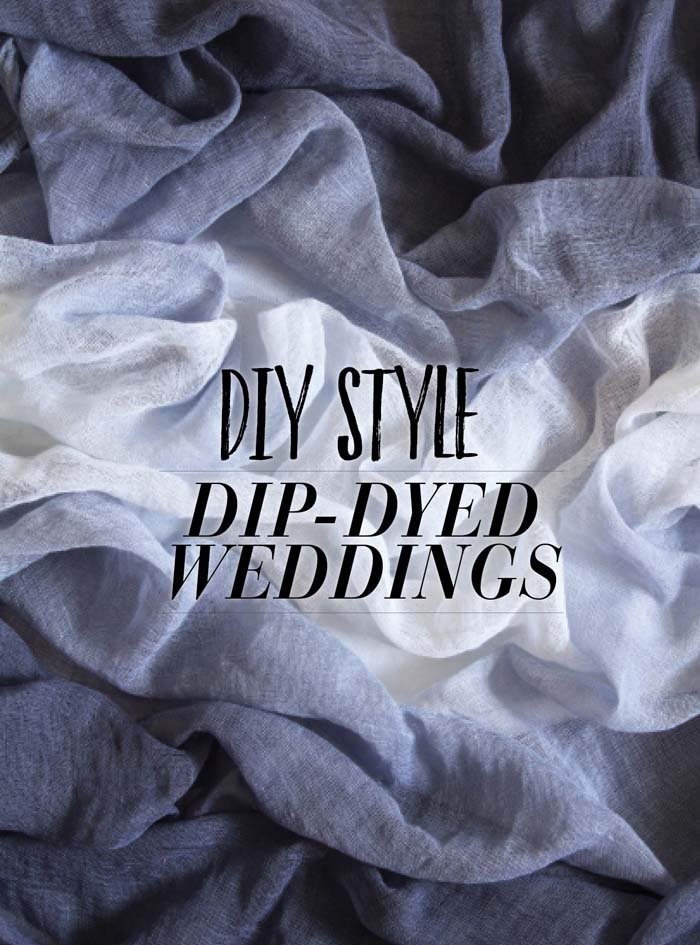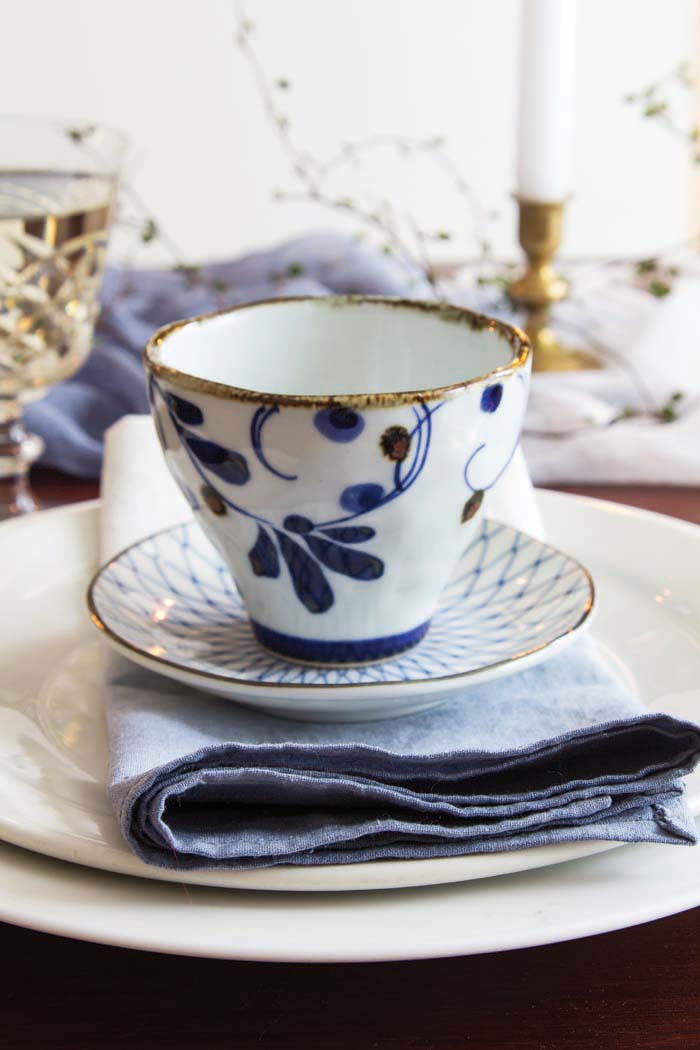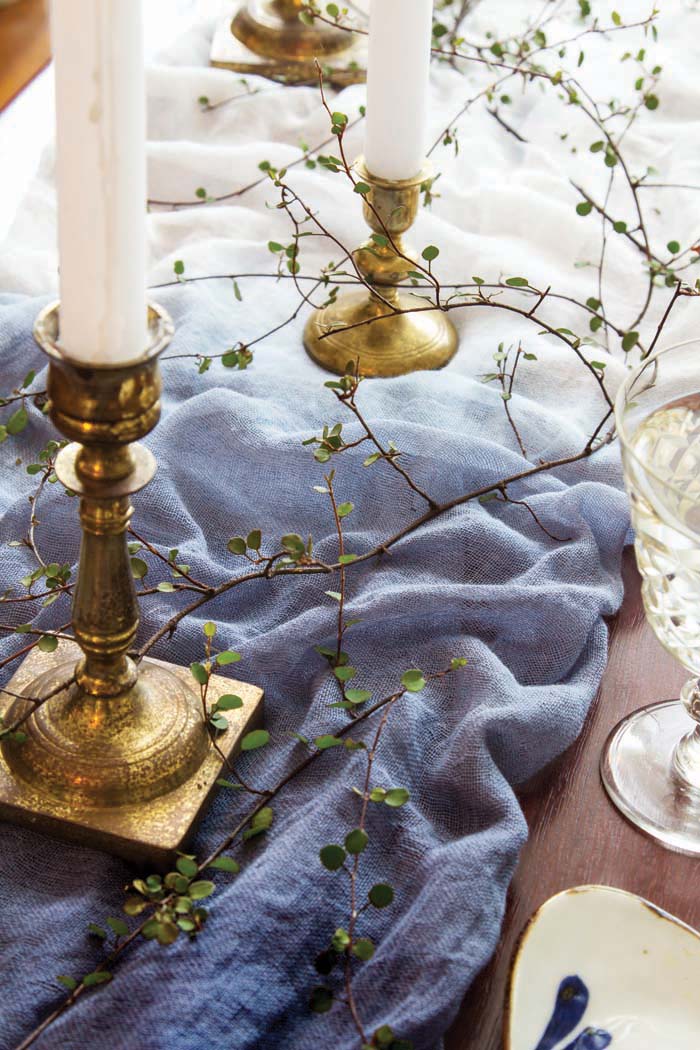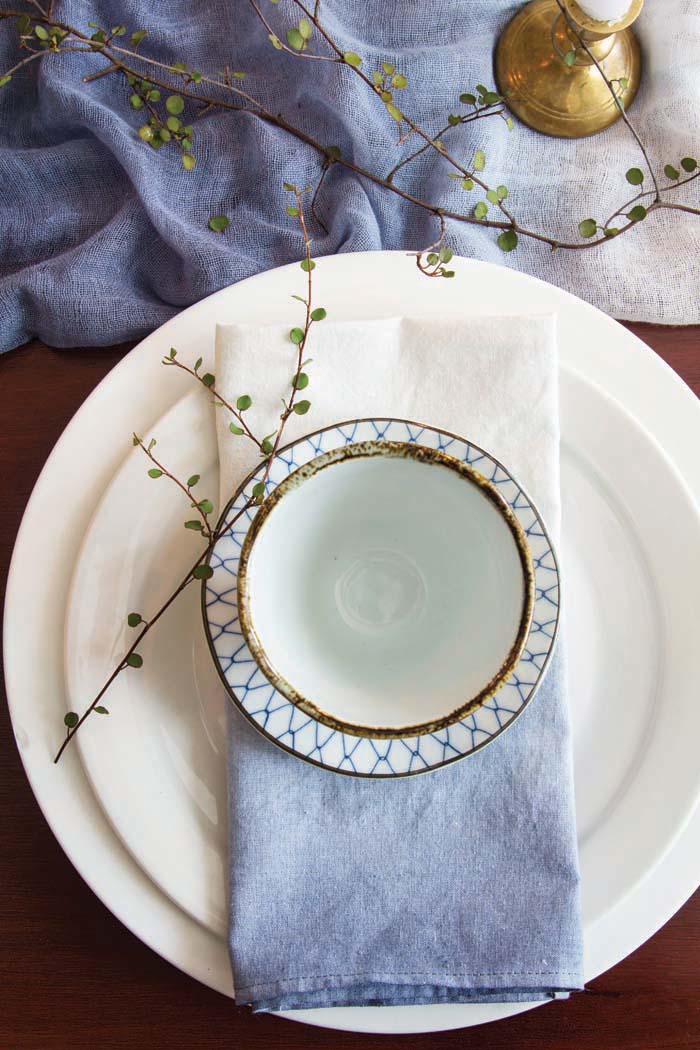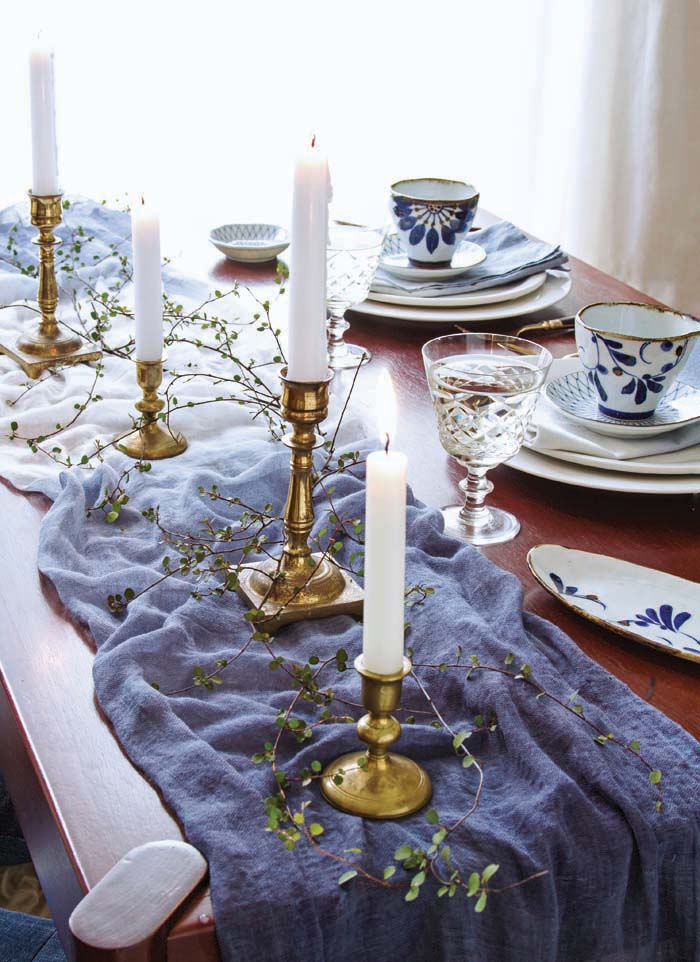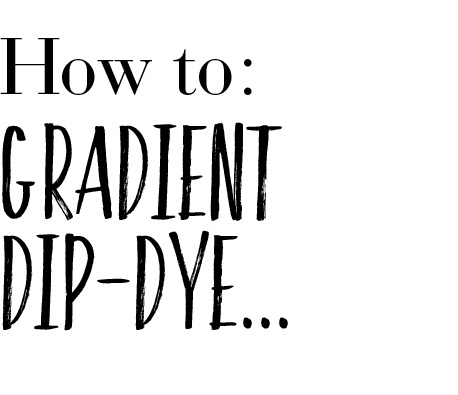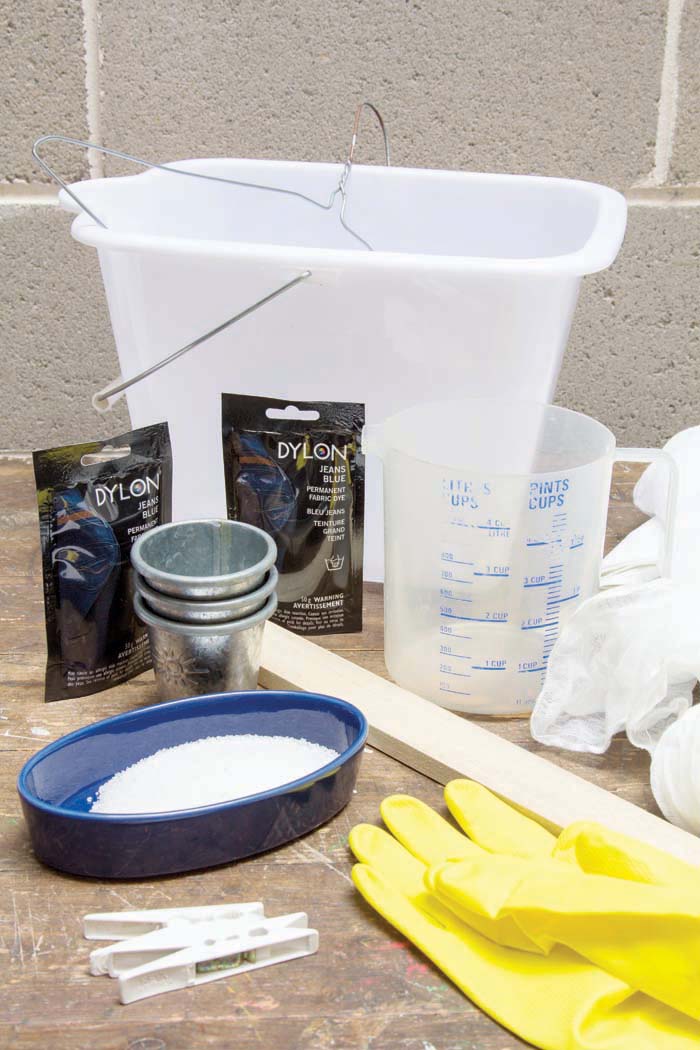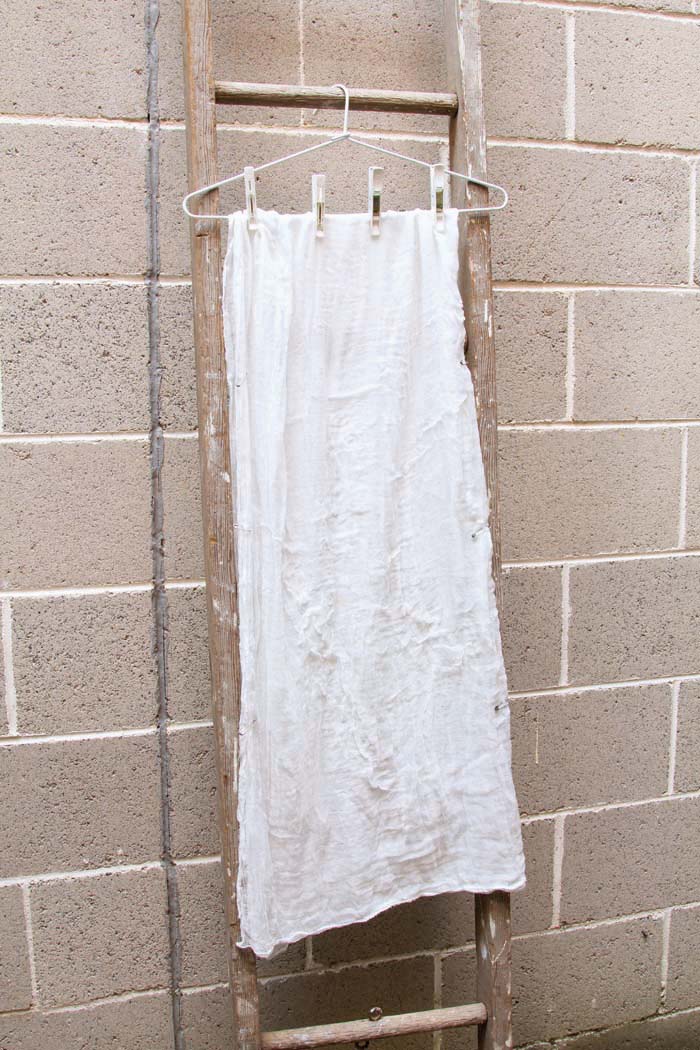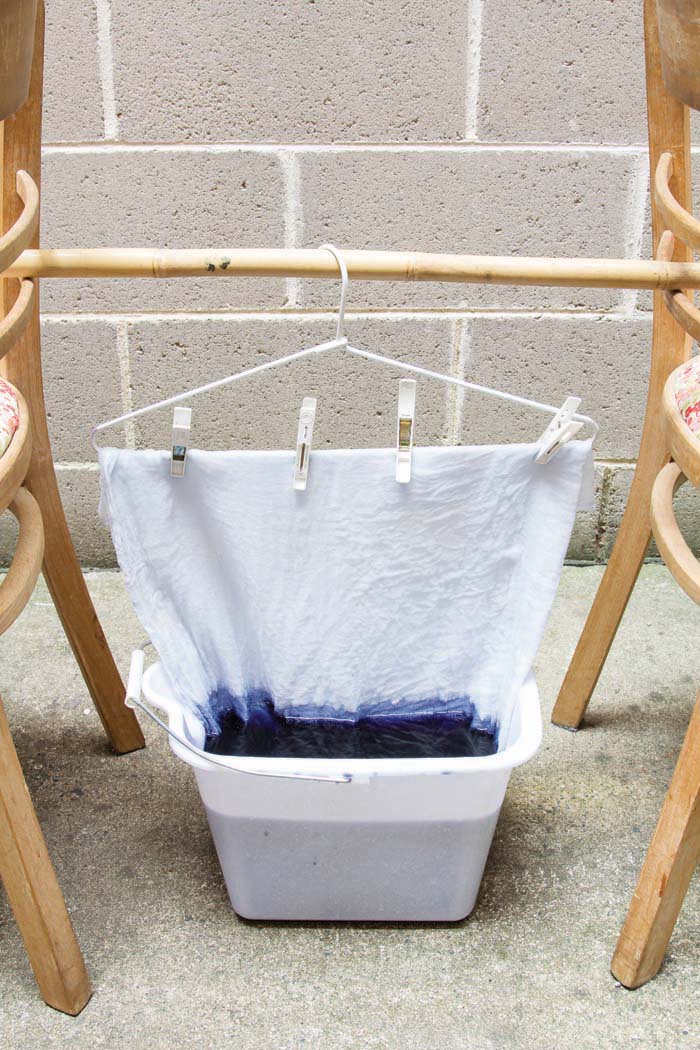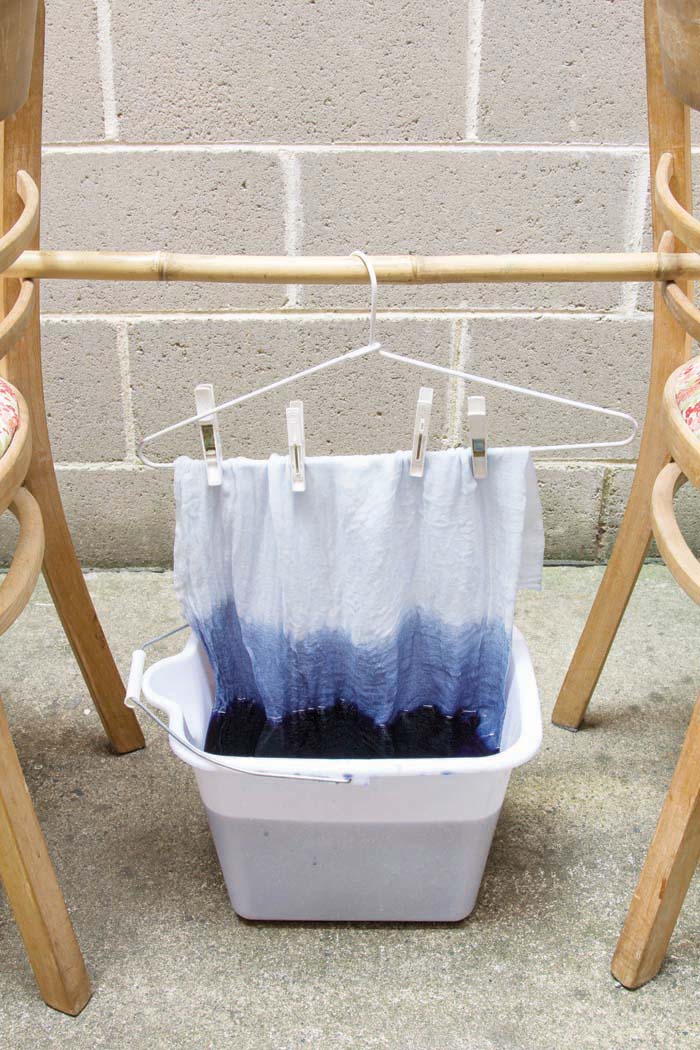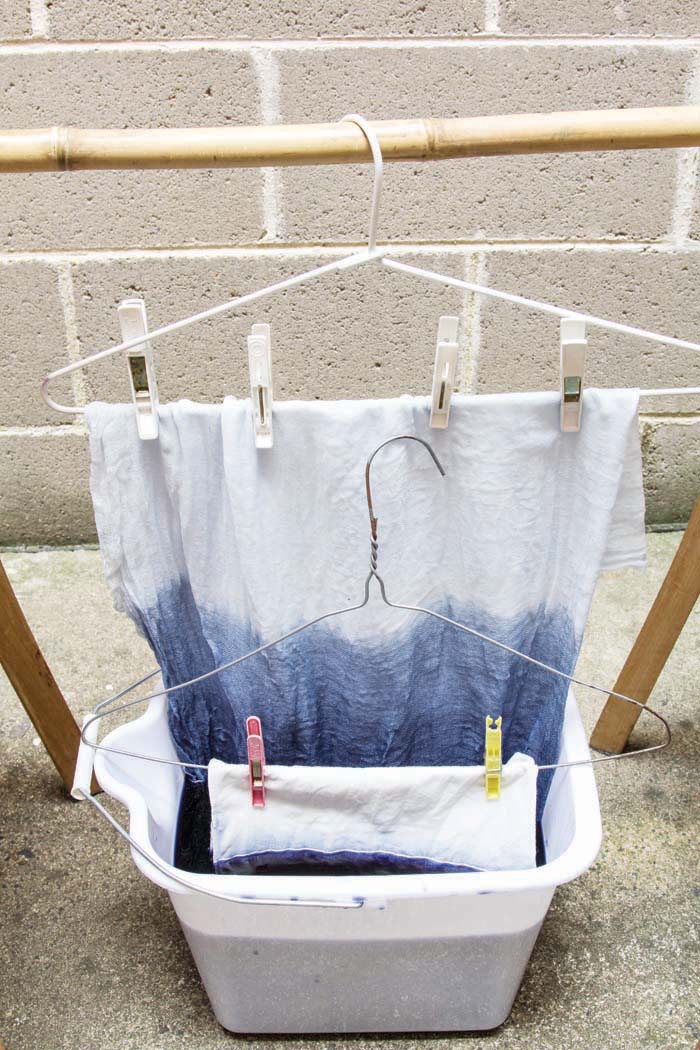Add a designer edge to plain fabric with this easy dip-dying technique to create a stunning tablescape. The eye-catching effect of graduated layers of ink-blue colour brings a subtle sense of tranquillity and style to any table. When combined with crisp white and warm timber shades, it creates a gorgeous contrast that mixes classic elegance with organic, artistic touches.
Indigo-dyed muslin fabric softly draped along a table meshes perfectly with a low-key, informal table setting. The cool blue shades contrast beautifully with the deep warm tones of the wooden table and are further enhanced with the addition of vintage brass candle sticks.
Mix-and-match dinnerware in similar shades ties the look together. The edges of the white cotton napkins have been dipped in the dye bath for ten minutes, adding another level of detail to the overall setting.
Choose delicate vines or ivy such as wandering wire vine as your floral detail. Placed strategically along the runner, it can be shaped and twisted around the candlesticks without covering up all of your hard work.
To achieve the gradual shading effect of ombré dip-dying, you need to dye the fabric in a few stages. Follow the easy step-by-step instructions on the following pages and see how easy it is to create your own unique pieces.
You will need:
- Dylon Fabric Dye sachets*
- 250g salt per packet of dye
- Rubber gloves
- Wooden spoon
- Cotton fabric the length of the table
- Plastic container for dye bath
- Coat hangers & pegs
* Dylon Jeans Blue permanent fabric dye has been used for this project. One sachet of dye is required for every 250g of fabric. Go to www.dylon.com.au to purchase or find stockists in your area.
S T E P 1 :
Prepare your working area
Use a large container to mix the dye. It will need to hold approximately 6 litres of hot water. When gradient dip-dying, hang your fabric and move it progressively upward with each addition of dye. For our demonstration, we suspended the fabric from a clothes hanger hung from a pole, and suspended between two chairs. It is advisable to work outside in a well lit area as the dye can stain porous surfaces. Have all your equipment and materials ready before starting the dying process.
S T E P 2 :
Fabric preparation
Prepare your material by washing it in warm soapy water, rinse and squeeze out the excess water leaving the fabric damp. This helps the dye to be more easily absorbed producing an even colour. For our demonstration, we used three layers of dye. Small safety pins can be used to mark each level. See image 1. This step is optional but it can be useful when trying to gauge how much fabric is in the dye bath.
S T E P 3 :
Prepare the dye bath
Premix the dye as per the manufacturer’s instructions and divide it evenly into three separate bowls. Fill the bucket with six litres of warm water and stir in the salt until dissolved. To create the lightest shade of your gradient pattern, add ⅓ of the dye concentrate mix to the water mixture in the bucket and stir well. Remember, with every layer, increase the amount of dye and the time immersed.
S T E P 4 :
Dying the fabric
1. Hang the fabric over the coat hanger and secure in position with pegs. Carefully lower the fabric into the dye bath to the first level. Leave for five minutes or until you reach the preferred colour intensity. See image 2.
2. With clean, gloved hands, remove the fabric from the dye. Hold the undyed end with one hand while wringing out the excess dye with the other. Place the fabric on a clean surface away from the dye bath and stir in the second lot of dye.
3. Dip the fabric to the second level and leave to sit in the dye bath for ten minutes. See image 3.
4. Repeat step 2 and add the third lot of dye. Immerse the fabric to the third level and leave for 20 minutes.
5. Rinse the fabric with cold running water before washing in warm soapy water. Rinse until the water runs clear. Wring out the fabric and hang it out to dry.
Double dipping: Once you get the hang of it you can dip more than one item at a time.
T I P S :
1. When working with fabric dye, make sure you protect your hands and wear gloves. Use a wooden spoon to push the fabric into the dye bath mixture.
2. Peg the fabric to a coat hanger to avoid it sinking to the bottom of the dye bath.
3. When handling the fabric between dippings, and to avoid any unwanted spots of dye on the non-dyed section, have a hand towel close by to wipe any droplets of dye from your gloves.
For more wedding DIY projects, be sure to check out our DIY blogs and the latest issue of Modern Wedding DIY Magazine!
MW x
Styling, photography and words Gail MacDiarmid

